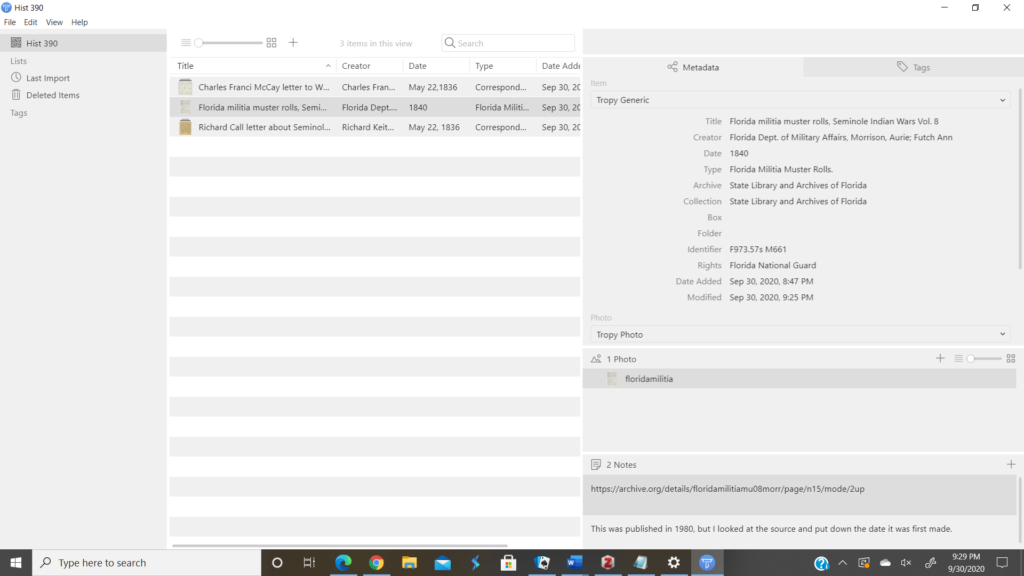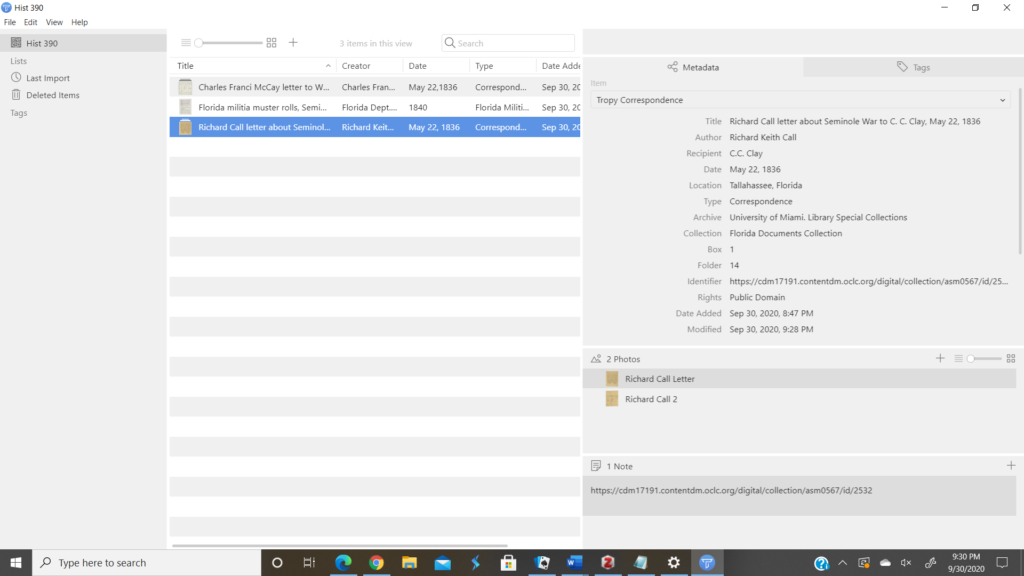Tropy and Primary Sources
The first source is Florida Militia Munster Rolls. These lists all of the soldiers and their information in order to keep track of all of them. Horses and equipment are also listed. More importantly is what these rolls and all the other volumes can tell us about the course of the Seminole War, and more specifically whether the U.S. is winning or losing. One thing you could look at is the number of horses that have died in order to see if the U.S. is in a good place in the war at the moment. There is also a Record of Events underneath some of the Muster Rolls so any major losses or victories would also be found there. The rolls also show how many people have been recruited, died, injured, or have deserted which from what I’ve seen is that not many soldiers have suffered any casualties. This shows that at this point the United States was winning which if you know the outcome of the war is an apt prediction. This also shows the location where most of the fighting was going on which was Florida.
The second source is a Richard Call letter to C.C. Clay from May 22, 1836. It discusses the current state of Florida with the Seminoles trying to advance in the northern border of Florida. This once again places the conflict in Florida. Call discusses that with the soldiers from Alabama and Georgia they will be able to force the Seminoles back. He theorizes that the Seminoles will escape to the Florida Penninsula. This tells us that the troops although they have the numbers, they don’t have the skill to corner the Seminoles.
The third source is a letter from Charles Franci McCay to William McCay in 1836. In the letter, McCay criticizes General Winfield Scott’s campaign against the Seminoles. This is the 2nd Seminole War and it was the one that cost the United States the most. Although it seems most of the soldiers are fine, McCay criticizes the General for not injuring and single Native American. More importantly, it discusses that the rapidly approaching ratification of the Cherokee removal treaty may spur the tribe to war. This helps show what the motives were that began this war. McCay notes in the letter that the treaty is better for the Cherokee which insinuates that if they don’t comply they will be forcibly removed or even killed. This helps show the lengths that Congress and the government will go to get rid of the Native Americans. He also mentions that Native Americans are apparently killing a bunch of white people and that people have fled for protection. Whether these so-called cold-blooded murders are true what it does show is another motive for white people to fight the Native Americans and force them out.


